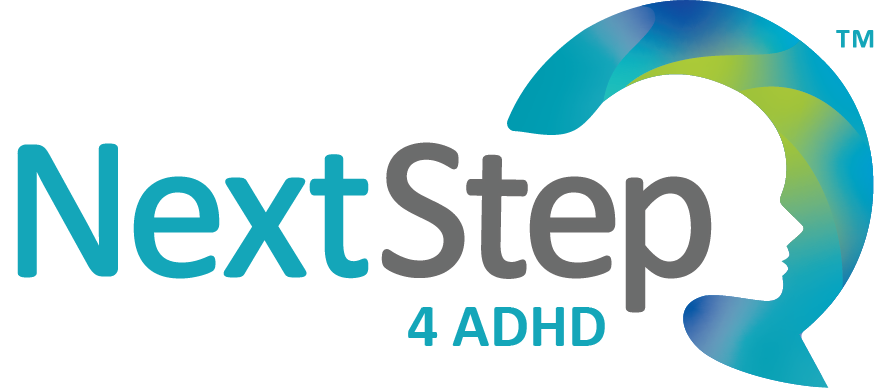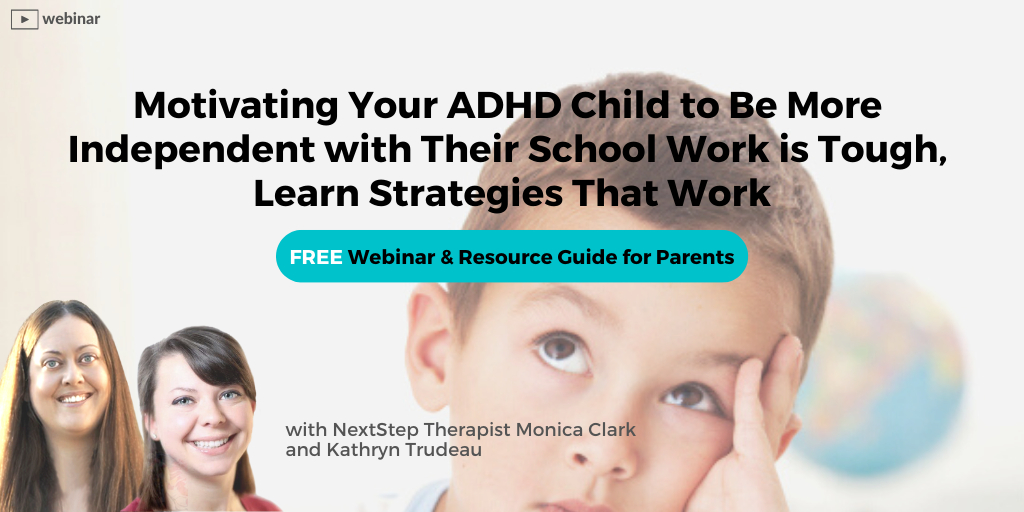
Planning Thanksgiving Dinner with ADHD? Tips for Success
Organizing and planning can be challenging tasks for adults with ADHD — and those are two skills necessary for planning a Thanksgiving dinner.
Thankfully, executive function skills — which include planning and organization — are teachable skills. And that means planning a successful Thanksgiving dinner is within your reach.
Here’s what you need to know:
Plan Your Menu in Advance

First things first: plan your menu!
Organizing your thoughts and goals for the day is important. You might benefit from using a journal to plan your menu. Be sure to plan for all components of your meal, including:
- The main dish (it’s okay if turkey isn’t your thing)
- Vegetables
- Starches, including mashed potatoes and sweet potatoes
- Side dishes, including cranberries or other sauces
- Appetizers
- Bread or rolls
- Desserts
- Beverages
Creating this master menu is step one in managing your time on Turkey Day. For example, you might choose to make some of these items the day before Thanksgiving Day. You might need to take out your turkey from the freezer. We’ll get to time management tips later in this article, but for now, know that your menu is the first step to a successful event.
Need inspiration? Here’s a list of 50 tasty Thanksgiving recipes.
Prepare for Your Grocery Trip
Planning for a big event like Thanksgiving can seem daunting especially when your ADHD symptoms ― poor time management, inattention, difficulty organizing —start infiltrating your grocery shopping trip. Another ADHD symptom ― impulsivity ― makes grocery trips particularly difficult.
The best way to combat these challenges is to prepare for your grocery trip. Trying to plan a meal for a large party is difficult without planning, whether you have ADHD or not.
Before you even head to the store, you’ll need:
- A grocery list (including any items you need for the party e.g., paper plates, candles, décor)
- A designated time to shop (trying to squeeze in a large shopping trip isn’t ideal… allot plenty of unrushed time to shop)
- A full belly (shopping on an empty stomach increases your risk of impulsive buys and deviations from your list)
Tips for Making Your Grocery List
- Always write your list down, either on paper or in a digital grocery app. This will help eliminate forgotten items.
- Include quantities of items e.g. two cans of pumpkin puree or one 32-ounce can
- Be specific e.g. bread flour versus cake flour
- List out ingredients for a recipe e.g., instead of writing “pumpkin pie stuff” write two cans of pumpkin puree, eggs, two boxes of pie crust mix, 1-ounce jar of pumpkin spice mix, 1 pint of heavy whipping cream… and so on
Use Your Calendar
There’s a lot going on in the days leading up to Thanksgiving, and a calendar can you keep track of everything you need to do.
If time management is especially difficult for you, a calendar is even more so important.
You might use your calendar to create a schedule for:
- Setting out the turkey — some turkeys need days to thaw. You can check here.
- Setting the table
- Preparing any side dishes prior to Thanksgiving
- When to start baking
- When to put beverages in the fridge
- When to start cleaning for guests (you might start your cleaning days before Turkey Day and focus more on baking closer to the big day)
A well-organized calendar can help prevent last minutes scrambling.
Delegate
Just because you’re hosting Thanksgiving, doesn’t mean you have to do it alone. Delegating tasks, even small ones, can help the day run smoother.
Ideas include:
- Giving small (but well-defined) tasks to your children
- Be specific: instead of asking for “help” ask for specific help e.g., “sweep the dining room” or “write names on the place settings”
- Ask for friends or family members to bring a side dish (but write this on your menu so you can keep track!)
Delegating doesn’t just mean friends or family helping you. You might delegate or receive help in other ways too. This might include hiring a cleaning service to clean your house the day before Thanksgiving, or you might order pies from a local bakery. Note that these all require pre-planning so if you think you’ll outsource help, start the preparations well in advance.
Don’t Overestimate the Power of Simple
If you feel overwhelmed, try to focus on simple things. If the thought of roasting a whole turkey overwhelms you, try a turkey breast instead. If the idea of juggling oven time between pies and rolls is too much, go for simple. Order rolls from a bakery to free up some space.
At the end of the day, Thanksgiving is about coming together as a family and celebrating love, joy, and things we are thankful for in life — and a simple meal can be part of that.
Tools to Help You Plan
Here are a few suggestions to make planning Thanksgiving even easier:
- Online or paper calendar
- Online or paper grocery list
- Online grocery delivery services (Some grocery stores offer delivery, but you can use other apps like Instacart too.)
- The number to the Turkey Hotline! If you have a cooking problem, the Butterball Turkey Hotline can help!
Enjoy the Day!

No matter how the day unfolds, remember to cherish the memories and celebrate those you love! If something goes wrong, or an ingredient goes missing, take a deep breath, center yourself, and carry on.
Need Extra Help with Planning and Organization?
If you’re still feeling overwhelmed with planning and organizing tasks, we can help. Here at Next Step 4 ADHD, we provide comprehensive, multimodal support, including:
- One-to-one ADHD coaching
- Medication management
- Therapy
- Online courses, including our FREE self-care course which focuses on nutrition
- Group courses, including Planning & Organizing Group Program
To make an appointment or to learn more, call us at 502-907-5908. You can also request an appointment here.
Learn More
16 Positive Parenting Phrases to Empower Your Child
Children with ADHD often do not respond well to typical methods of discipline. Punishment, removal of privileges, and time-outs often worsen their problem behaviors. Children with ADHD need to feel capable and experience success before they will be motivated to do a task. Often they get so used to doing a task imperfectly and getting criticized, that they just stop being willing to do a task at all. Enter: Positive Parenting.
Learn More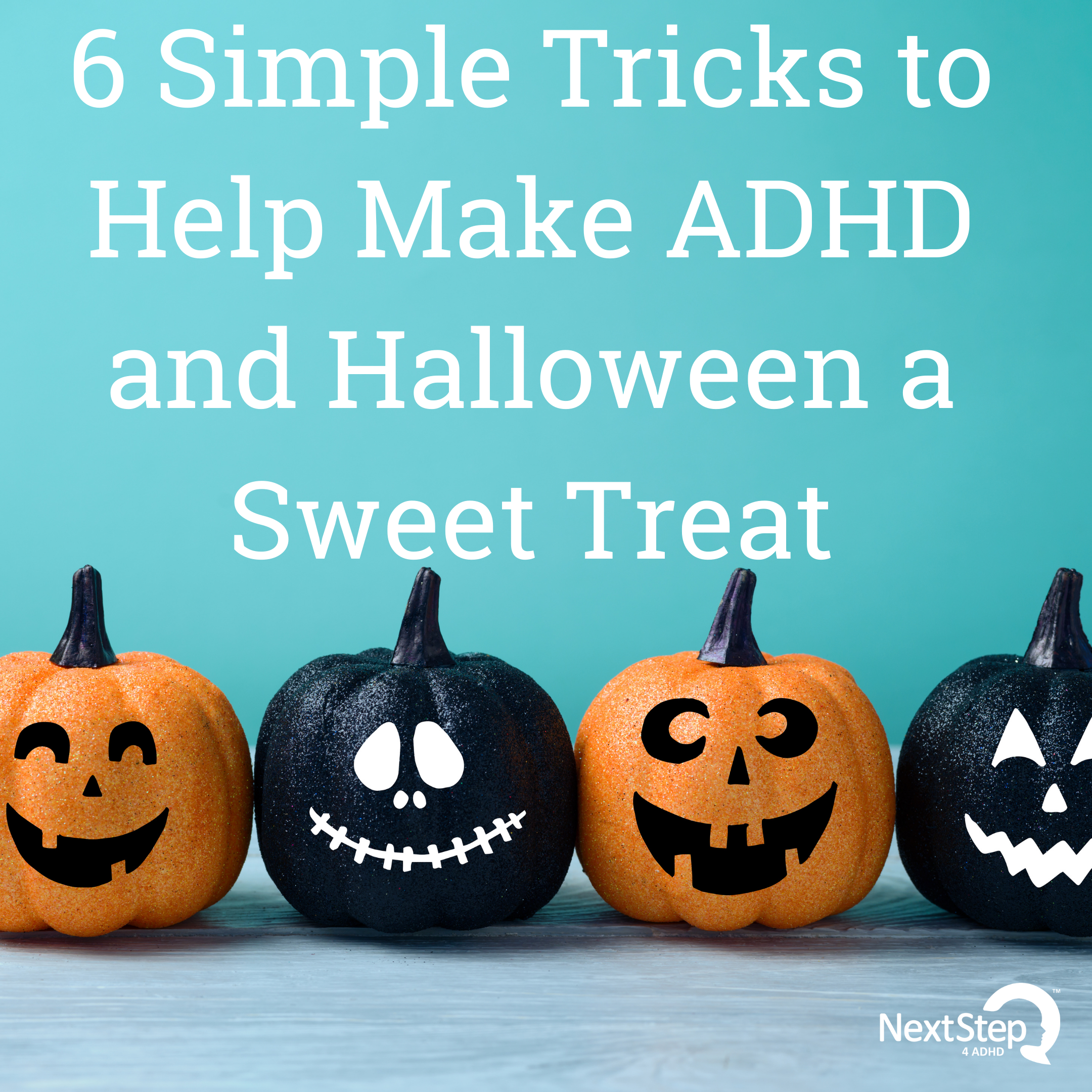
6 Tips to Make Halloween More ADHD-Friendly
Halloween is an exciting holiday for children. Even with changes to the 2020 Halloween guidelines, kids look forward to the festivities, the fun, and of course, the candy. Halloween is also full of distractions and routine disruptions, which can be challenging for kids who struggle with ADHD. With a little planning, though, you can make Halloween both safe and fun for your child.
Learn More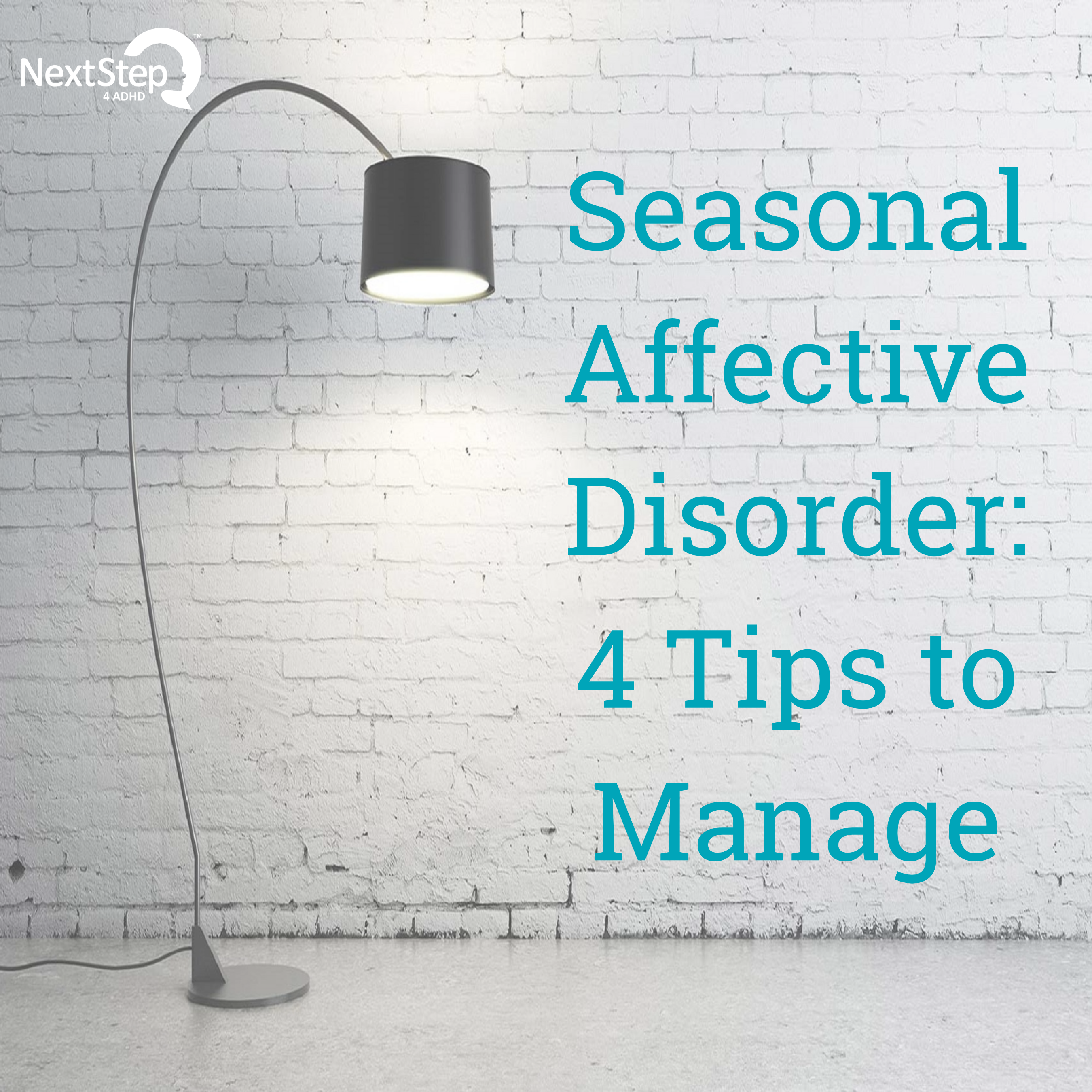
Seasonal Affective Disorder and ADHD: 4 Tips to Fight Depression
Do shorter days and darker nights have you feeling a little blue? Seasonal affective disorder (SAD) is common during the darker winter months, and unfortunately, SAD disproportionately affects individuals with ADHD.
If you’re experiencing any symptoms of SAD, we recommend that give us a call. Whether you’re struggling with SAD, depression, or ADHD, we can help you.
In the meantime, keep reading to explore what SAD is and how you can keep it at bay.
ADHD and SAD
Like depression, SAD is a mood disorder. It is associated with depression and related to seasonal changes in light. In countries where the sunlight hours are few (such as the Nordic countries), SAD impacts up to 20% of the population.
Even beyond the icy dark Nordic countries, SAD may disproportionately affect adults, teens, and children who have been diagnosed with attention deficit hyperactivity disorder (ADHD). Researchers estimate that 27% of the individuals with ADHD also struggle with SAD — that’s 7% more than those already living in darker climates.
What Is Seasonal Affective Disorder?
Seasonal affective disorder is a type of depression that is triggered by the change of seasons and the variations in hours of daylight each day.
Most people with SAD notice their symptoms begin in autumn and extend through the winter.
Symptoms of SAD (whether or not you have ADHD) include:
- Increased feelings of sadness
- Feeling depressed almost every day
- Loss of passion for your favorite activities
- Fatigue and low energy levels
- Difficulty sleeping
- Changes to your appetite
- Feeling agitated
- Trouble concentrating
- Experiencing feelings of hopelessness or guilt
- Having frequent thoughts of death or suicide
Why Do Variations in Light Affect Your Mood?

Why do the changing seasons affect your mood? Here are three contributing factors:
- Your circadian rhythm: Decreasing sunlight may disrupt your body’s circadian rhythm. If your internal clock is impacted, it can lead to feelings of depression.
- Serotonin levels: Reduced sunlight can also cause a drop in serotonin, and this decrease in serotonin may trigger depression.
- Melatonin levels: The change in sunlight doesn’t just affect your serotonin levels. It can also impact your level of melatonin. Changes in melatonin can alter your sleep patterns and even your mood.
4 Tips for Reducing the Impact of Seasonal Affective Disorder
Now that we’ve covered what SAD is, how to spot the signs of SAD, and how light affects your mood, what can you do about it?
Here are four strategies you can implement.
1. Schedule Regular Exercise
If you spend less time outside during the winter, you’re not alone. Most people naturally spend less time outside during the winter because #brrr.
And less time outside often equates with less physical activity, and that can definitely impact your mental health.
Most people spend only 7.6% of their time outside. Considering that Americans also spend 5% of their time simply driving in the care, 7.6% isn’t a whole lot!
The changing weather, the decreasing light, and the decrease in physical activity is a perfect storm. If you think you have SAD or depression, consider scheduling regular exercise into your day.
Moving your body promotes good brain chemistry, which can help you feel better.
The Norwegian have a wonderful proverb: “There’s no such thing as bad weather, only bad clothes.” Bundle up and try some cold-weather activities like skiing, cross-country skiing, or snowshoeing. Even a leisurely stroll in the brisk air is good for you.
Prefer to say in? No worries! There are plenty of indoor activities to keep you active: running on a treadmill, yoga, Pilates, lifting weights, or following along on YouTube dance workout.
2. Soak Up Some Sunshine

Even if the sunlight diminishes, try to soak up a little sunshine each day. Research shows that low vitamin D levels can contribute to SAD. Experts suggest trying to get 30 minutes of morning sun — to start the day off right. If you go for a jog or walk at this time, you’ve crossed two items off of this list at once: regular exercise and time spent outside.
3. Stick with Your Schedule
Sleep disturbances are common with SAD. In order to prevent even more sleep interruptions, stick with a schedule.
- Go to sleep at the same time every night
- Avoid blue lights before bed
- Sleep in a cool, dark room
You can find more sleep tips in this article: What Is Sleep Hygiene?
4. Seek Treatment
Even if you’re exercising regularly and getting to bed on time, SAD can still take root.
If you are experiencing symptoms of SAD during the fall or winter months, contact one of our mental health professionals who can help you “weather the storm.”
Call our office at 502-907-5908 or request an appointment online.
Learn More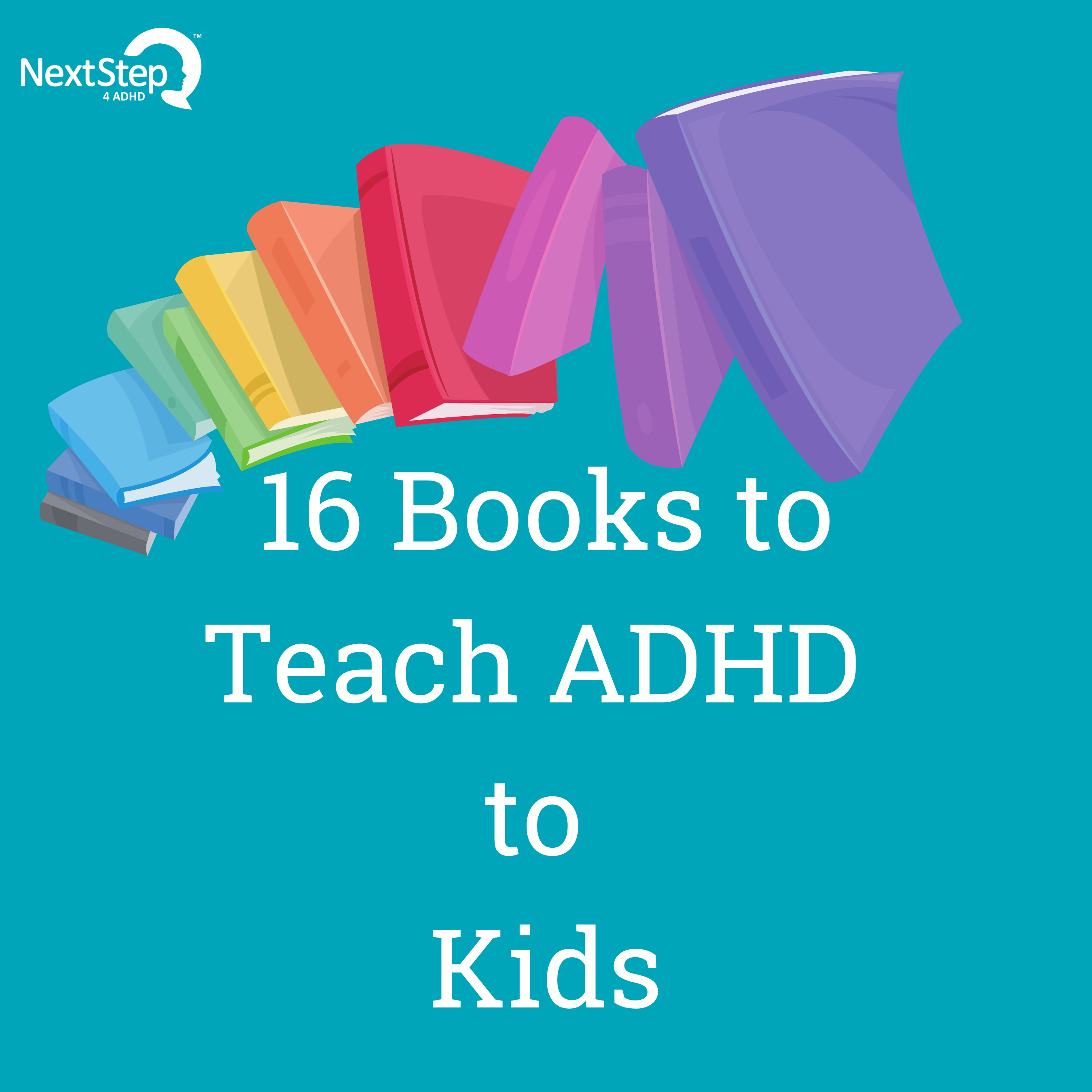
16 Books to Help Kids Understand ADHD
Is your child newly diagnosed with ADHD? Here are 16 books to help your child learn more about ADHD and how to manage the challenges and strengths.
Learn More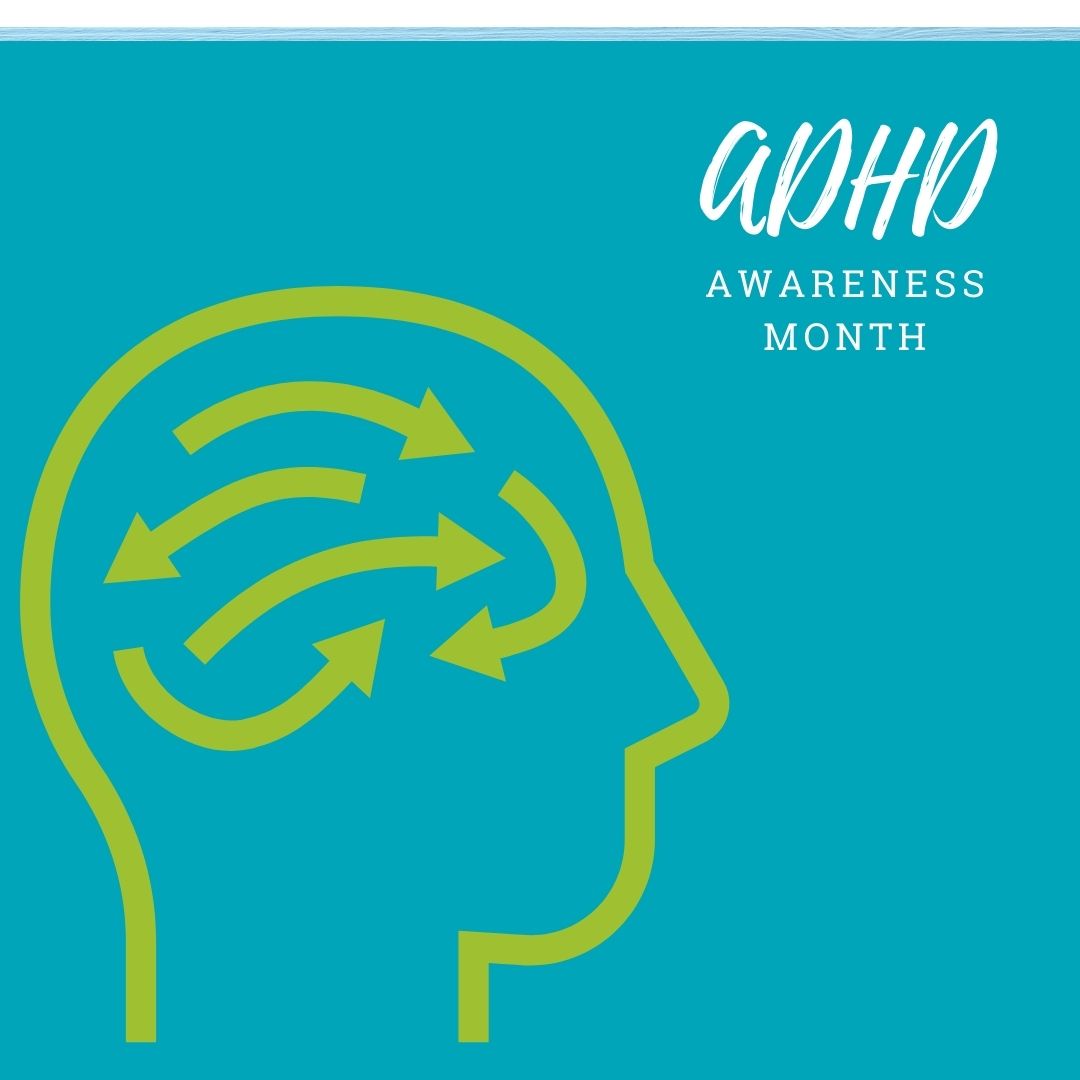
It’s ADHD Awareness Month: Common Questions, Reliable Answers
October is ADHD Awareness Month, and this year’s theme is “Common Questions, Reliable Answers.”
In this post, we’ll cover a common question and debunk the myths surrounding it: Is ADHD a real medical disorder?
“Is ADHD a Real Medical Disorder?”
Unfortunately, there is a myth perpetuating that ADHD isn’t real, but the truth is that ADHD is real — and it’s treatable. Let’s dive into this.
ADHD Is a Valid Diagnosis
ADHD is a neurobiological disorder that affects your ability to focus and control impulses. ADHD is not a lack of willpower to focus on the task at hand; instead, most experts believe the development of ADHD may be influenced by a person’s genes, the presence of toxins in his or her environment, brain injuries, and subtle nuances in the hardwiring of his or her brain.
Major medical, psychological, and education organizations recognize ADHD as a legitimate diagnosis. This includes:
- The National Institutes of Health
- The U.S. Department of Education
- The American Psychiatric Association
The American Psychiatric Association lists all of the medical disorders in the Diagnostic and Statistical Manual of Mental Disorders— the official book of mental health disorders used by both psychologists and psychiatrists. ADHD is included in this book.
Brain Scans Can Identify ADHD
Brains with ADHD show structural and chemical differences from non-ADHD brains.
According to a new study published in Radiology, a magnetic resonance imaging (MRI) of the brain can identify people with ADHD. The same study reveals that information from the MRIs can help to distinguish among the different types of ADHD.
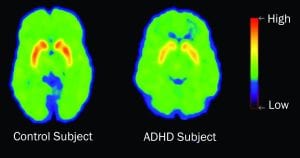
PET scans also reveal another difference in the brain: decreased dopamine receptors in an ADHD brain.
[Image source]An ADHD Diagnosis Is Reliable
When it comes to mental health diagnoses, reliability shouldn’t be discounted. This is a psychological term that refers to the ability for two different mental health care providers to evaluate the same child (or adult) and independently come to the same diagnosis of ADHD.
What does this mean? It means that ADHD is a very reliable diagnosis.
Debunking Other ADHD Myths
This isn’t the only ADHD myth. In the spirit of answering common questions with reliable answers, feel free to browse through our ADHD myth series:
- ADHD Medication Myths and Facts
- ADHD Myth Series: Is It Okay to Stop Taking ADHD Medications on School Breaks?
- Myth: ADHD Only Affects Kids
What Can You Do to Support ADHD Awareness Month?
Whether you, a spouse, or your child have ADHD, there are many ways for you to learn more about ADHD during the month of October.
Here are just a few ideas:
- Learn more about ADHD — consider taking a free course!
- Learn about other ADHD myths (links listed above!)
- Read books on ADHD (there are several books in our shop)
If you or a child are demonstrating the signs of ADHD, what better time to get an assessment than ADHD Awareness Month!
You’re Not Alone on This Journey
At Next Step 4 ADHD, we offer complete support and comprehensive treatment for adults, teens, and children who struggle with ADHD. We strongly believe that simply medicating the problem doesn’t fully address the issue. There are skills you can learn and develop.
More importantly, our team of professionals offers an ongoing support system when you need it from coaching to therapy to online courses.
Dealing with ADHD on your own can be difficult, but with our innovative approach, you’re never alone. We are here to guide you with your next steps. If you’d like to learn more about us or set up a confidential discussion with one of our professionals, you can complete this form for a virtual appointment. Alternatively, call our Louisville, Kentucky office at (502) 907-5908.
Learn More
5 Strategies to Reduce Stress in Your Home
If your child’s school year looks different than what you anticipated, you’re not alone. Many parents are forging ahead in a “new normal” — a “normal” that’s not without its fair share of stress. This may leave you wondering, “How can I reduce stress in my home pronto?!”
Creating structure and routine is an incredibly effective way to prepare your children for distance learning. But the reality is that stress isn’t just limited to school time.
In this article, we’ll explore five strategies that you can implement to reduce stress in your home. After all, creating a warm, positive environment in your home plays a big role in supporting your entire family’s mental well-being.
5 Ways to Reduce Stress in Your Home
ADHD can create unique challenges in any home, but if you’re parenting a child with ADHD during a pandemic, you might experience even more challenges.
Here’s what you can do:
1. Acknowledge the Reality of Your Situation
We know that normalcy, routines, and structure are important tools for helping children with ADHD thrive. But “normalcy” doesn’t look like what it used to. Do what you can to create structures and routines — even they are different from what you expected. Focus on staying calm and setting an example of resiliency for your children.
“Humans have survived worse times and we will get through this latest trial. Let’s set the example for our children with calm preparedness.”
Dr. Alphonso Nichols
Remember: We are all doing the best we can.
2. Focus on the Simple Things

There are several simple ways to create normalcy at home, and once you identify those, you’ll notice some reduction in stress. Here are some simple things that make life less stressful:
- Establish simple (but efficient) bedtime routines (Click here to read: “Parenting a Child with ADHD: 5 Tips for Bedtime.)
- Start meal planning and establish easy weekday breakfasts
- Post a schedule on the wall where everyone can see it
While these seem like simple changes you can make, they go a long way in making your home less stressful. Your child will thrive on the structure and routines.
3. Focus on What’s in Your Control
Dr. Nichols reminds us, “Instead of feeling helpless, we should focus on what we can do.”
There are a lot of things outside of our control right now — but there’s also a lot of things within your control too. Focus on those.
Here’s what you can control:
- Your dedication to safety guidelines and hygiene recommendations
- How you create your space at home
- Your response to situations
Here’s why it matters: “Anxiety is contagious. The more anxious we parents are, the more anxious our children will be. It is important to teach our children resilience,” Dr. Nichols continues.
Instead of focusing on what we think should be, focus on what is. This sends an important message to children that we are resilient and can rise to the occasion to face challenges.
4. Prioritize Your Own Self-Care
You’ve probably heard the phrase: You can’t pour from an empty cup. Parenting without any fuel is stressful and potentially impossible. Your own self-care is the fuel you need. Self-care is essential for your physical and mental well-being. Studies show that self-care practices are linked to decreased stress levels.
The following self-care practices can help reduce stress:
- Regular exercise (aim for 30 minutes per day)
- Choosing nutrient-dense meals
- Getting 7-9 hours of sleep (for adults) (Click here to read “What Is Sleep Hygiene?”)
- Spending time doing an activity you love (even for just a few minutes)
- Attending to your physical health (including scheduling well-checks etc.)
When you practice good self-care, you model the importance of self-care to your children too.
Need to take your self-care to the next level? Enroll in our FREE self-care course: A Happier You Starts with Self-Care
5. Ask for Help When You Need It

Sometimes creating simple schedules, focusing on self-care, and adopting stress-busting practices (like yoga or meditation) just aren’t enough to reduce all stress.
If unmanaged ADHD in your child (or you) is adding to your stress load, don’t hesitate to ask for you. Asking for help is a sign of strength.
You can ask for help from:
- Your child’s school (ask how things are going, ask if there are any accommodations that can benefit your child, etc.)
- Other family members (let others know if your child is struggling and how they can help e.g., sticking with the schedule, implementing bedtime routines, etc. so everyone is on the same page)
- Mental health care professionals
Remember…
Many parents and children are experiencing some of the same feelings this year: typical school-year jitters along, concerns about overcoming challenges, etc. Remember to be kind to yourself. We’ll all navigating a new normal, and a little extra dash of kindness will make the journey easier for us all.
How We Can Help Reduce Stress
Here at NextStep, our friendly and compassionate team is here to support you and your family. If you or your child is struggling or experiencing increased anxiety, don’t hesitate to reach out to us. Whether you need medication management, therapy, ADHD coaching, or parenting coaching, we can guide you with your next steps to help you and your family thrive.
To schedule an appointment, give us a call at 502-907-5908 or request an appointment online.
Learn More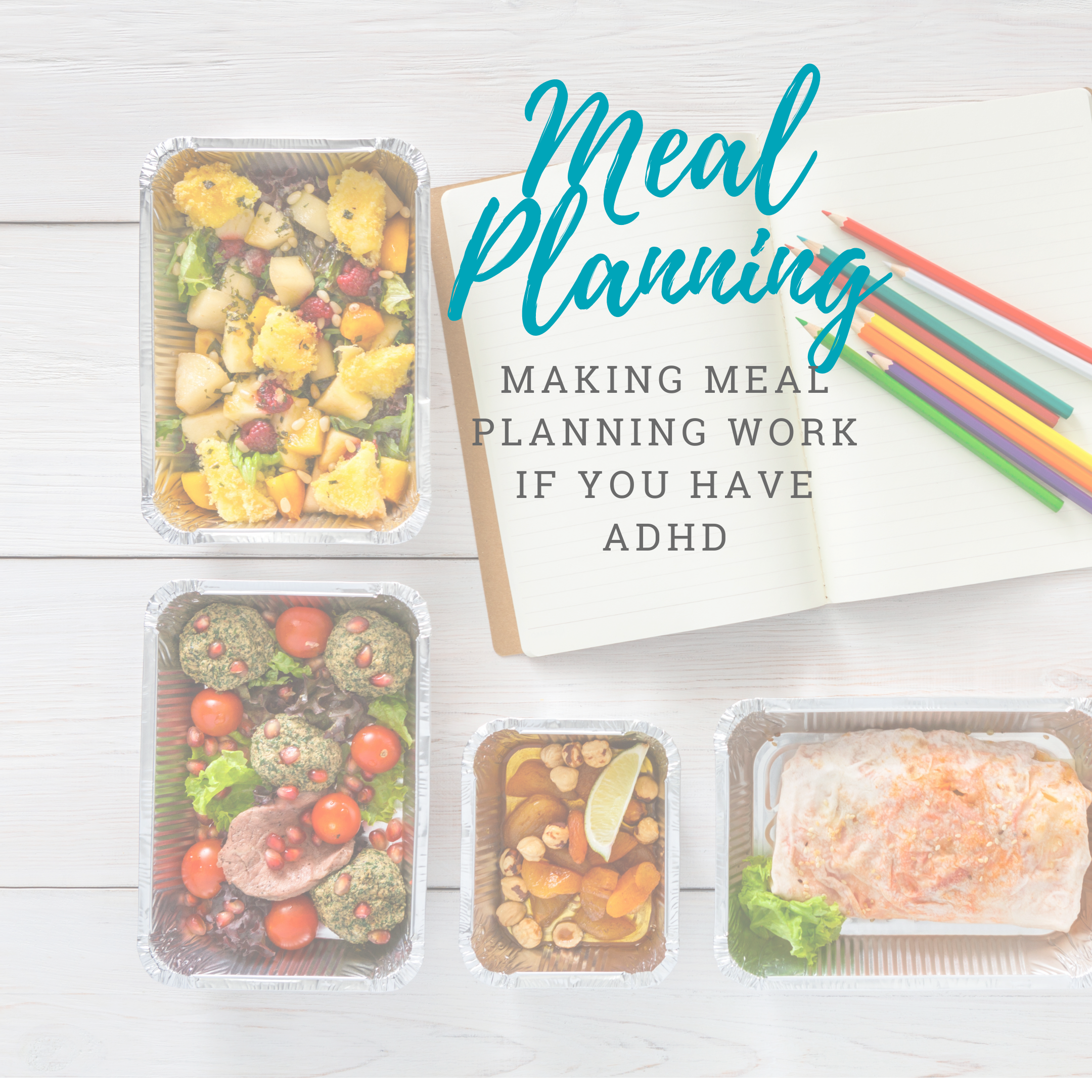
Meal Planning & ADHD: 9 Tips to Make It Work
Planning meals for your family can be stressful — especially if ADHD leads to feeling disorganized and unprepared. Learning how to meal planning can eliminate some stress around mealtimes.
Why Is Meal Planning Hard If You Have ADHD?
Meal planning refers to taking the time to choose your meals for the week. It can also include making your grocery list for the week too. So why is this so difficult if you have ADHD? Meal planning requires decision-making, planning, prioritizing — all of which are executive function skills. Because ADHD can lead to struggles with executive function skills, the struggle makes sense.
In other words, meal planning can be overwhelming and incredibly ADHD-unfriendly. The good news is that meal planning is a skill – and skills can be learned. In this article, we’ll explore the benefits of meal planning as well as 10 tips to make meal planning less overwhelming.
5 Benefits of Meal Planning for Your Family
Meal planning provides many benefits for you and your family. Exploring these benefits can be really motivating to stick with your plan. Think of this as your WHY as you embark on meal planning.
Meal planning can provide the following five benefits:
- Reduces the feelings of overwhelm around planning for meals.
- Helps you eat healthier. Planning ahead gives you a better chance of planning healthier meals.
- Saves you time. Save time by avoiding the need to run to the store multiple times. You’ll also save time each night because you won’t have to think about what to make — you already know.
- Saves you money. You can save money by reducing cutting out impulse buys and by avoiding duplicate purchases. Planning ahead also gives you an opportunity to take advantage of the weekly sales at your grocery store. Planning ahead also helps you stick with your budget.
- Helps you cut back on fast food. We’ve all been there: it’s late and dinner isn’t made yet — so you order take-out. Planning ahead cuts out last minute fast-food choices.
In the next section, we’ll share tips for making meal planning less overwhelming.
9 Strategies for Making Meal Planning Easier
1. Make a Master List of 10 Recipes
A master list of recipes provides quick and easy references to some of your family’s favorite recipes.
Tips for making a master list:
- Include plenty of easy recipes for busy nights (think: Instapot or CrockPot recipes)
- Sort your recipes by category (beef-based, pasta dishes, chicken, side dishes, soups, etc)
- Keep them written down (in a blank journal, on a Word document, or on flashcards in a recipe box organizer)
When meal planning, you can refer to your master list to fill out your weekly meals. You can use as many recipes as you want. You might use meals only from your master list. Or, you can use some from your list and try 1-2 new recipes each week. Do what works for you.
Need inspiration? You get your free ADHD-friendly recipe book here.
2. Don’t Try to Memorize Your Meal Plan
 Trying to memorize your meal plan will increase the risk that you deviate from the plan. You can write your meal plan:
Trying to memorize your meal plan will increase the risk that you deviate from the plan. You can write your meal plan:
- In a daily paper planner
- In an app
- On a dry erase board hanging in your kitchen
Tip: Using the dry erase board in the kitchen might be helpful to make sure your whole family is on the same page. This can limit the “What’s for dinner?” question.
3. Plan All of Your Meals
If you don’t make a plan for breakfast or lunch, you’ll more likely to either skip the meal or grab something quick from a drive-thru.
Include all of your meals when you meal plan. This doesn’t mean that breakfast or lunch has to be elaborate, time-consuming meals, either.
Examples include:
- Hard-boiled eggs and toast and a piece of fruit
- Overnight oats
- Brown bag lunch ideas such as leftover meat from dinner as a sandwich
Even if breakfast and lunch are quick meals, planning for them gives you time to get them ready. For example, if you know you want hard-boiled eggs for breakfast, you can make sure you allot time in the morning to get that done.
4. Check Your Daily Schedule
What if you have to work late on Tuesday? What if the kids have a dance recital on Thursday? Even on the busiest nights, you’ll still need dinner — but by taking your calendar into consideration, you ensure that you’ll have dinner ready.
Tip: You might designate busy nights as the slow-cooker night. You can also designate busy nights as leftover night — just reheat and go!
5. Check Your Pantry
When you’re meal planning, you don’t need to make 7 dinners each night from scratch with a pantry overhaul. You can use what you already have in your pantry to inspire your meals for the week.
For example, if you have a lot of canned tomatoes in your pantry, then plan a spaghetti night. Lots of chicken in your freezer? Try a pulled chicken recipe in your crockpot.
6. Choose In-Season Produce
Plan meals based on what’s in season. For example, planning a berry-based salad in the middle of winter might not lead to the best salad. Out-of-season produce tends to have less flavor and be more expensive.
Tip: If you want a fruit that is out-of-season, try the frozen version.
7. Don’t Forget to Plan for Leftovers
One of the most frustrating things is to end the week with a fridge full of leftovers. Instead, plan for your leftovers. Leftover night can be quite handy on busy nights.
Leftover nights cut down on wasted food, and it also gives you a night off of cooking.
How to make leftover nights not-so-boring:
- Get creative! If you don’t like having the same meal twice, you can repurpose your meals. For example, if you had steak on Monday, use the leftover steak to make steak tacos on Wednesday.
- Leftovers aren’t just for dinner. Make your lunches out of dinner leftovers. For example, if you have leftover roast chicken, you can slice it and top your salad with it.
8. Make Extra and Freeze It
Time-permitting, make a double batch of your favorite recipes. You can eat one batch for dinner, and then freeze the second batch for later. This can come in handy the following week if you need a quick dinner.
What can you freeze? Consider making double batches of meals such as:
- Soups (Lay flat in a Ziploc to freeze; once frozen, you can turn upright and stack soup easier.)
- Chili
- Bolognese sauce
- Waffles
- Meatloaf or salmon loaf
9. Schedule Your Meal Planning Time
The first step to meal planning is actually doing it. Set aside designated time to work on your meal plan in peace. It shouldn’t take more than 30 minutes.
Need More Guidance?
If you’re still feeling overwhelmed with planning and organizing tasks, we can help. Here at Next Step 4 ADHD, we provide comprehensive, multimodal support, including:
- Medication management
- Therapy
- ADHD coaching
- Online courses, including our FREE self-care course which focuses on nutrition
To make an appointment or to learn more, call us at 502-907-5908. You can also request an appointment here.
Learn More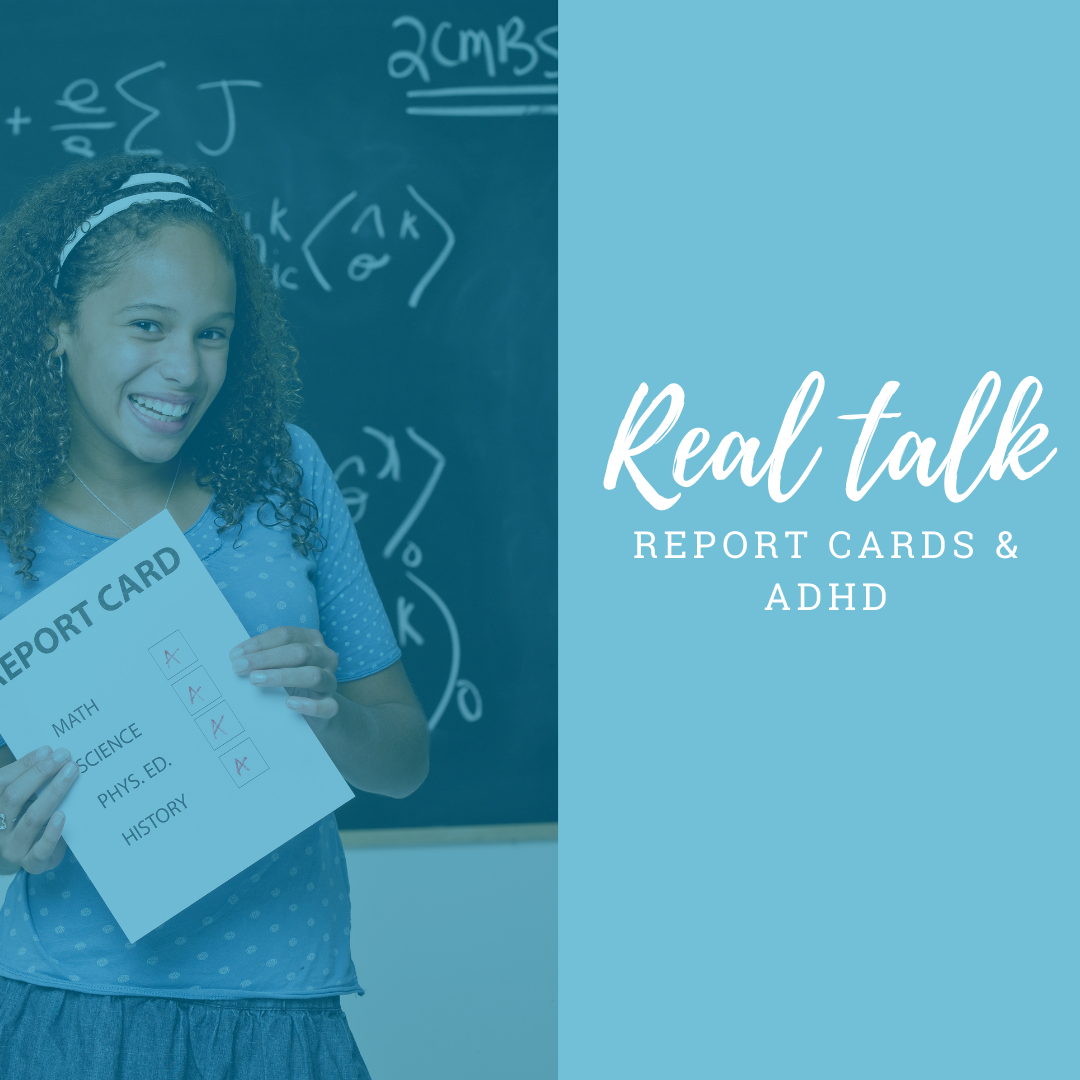
What to Do If ADHD Is Impacting Your Child’s Report Card
It’s no surprise that having ADHD can be challenging for adults. There are adults who find it difficult to manage (or event start) projects at work. Other adults may struggle to organize a household budget or calendar system. However, ADHD challenges aren’t limited to adults; children and teens may find that the challenges of ADHD can impact academic performance.
How does ADHD impact grades? Inattention is one of the biggest predictors of academic struggles, according to a study published in the journal Frontiers in Psychology.
If you suspect that ADHD is impacting your child’s academic performance, we recommend that you take your child for an assessment. Getting an accurate diagnosis is the first step in managing ADHD — and improving grades. As a full-service clinic, we offer all that your child needs from the initial diagnosis to medication management to parent coaching to therapy — and more.
In the meantime, we created this guide to help you prepare for conversations about bad grades.
When Your Child’s Report Card Surprises You…

Receiving a surprising report card can be upsetting for you, but keep in mind that your child may be upset too.
If your child comes home with bad grades, you might wonder how to talk about it. Here’s what you can do:
Tip #1: Give It Time
The first thing you want to do is to make sure you do not react in the moment. It’s tempting to want to express your frustration immediately. However, give yourself time to think and reflect.
Tip #2: Schedule a Time to Talk with Your Child
Instead of diving into the conversation about ADHD and grades, schedule it. Consider saying, “Let’s sit down together after dinner and talk about this, okay?”
Scheduling a time to talk gives you time to think and avoid hasty punishments.
Tip #3: Avoid the “I’m Disappointed” Tactic
It’s a classic scene.
A child hands over a report card to his parents, the parents scan the report card, and reply, “I’m really disappointed in you. I expected better grades.” You’ve probably seen this scenario played in TV shows or movies.
But this isn’t necessarily the best response to a bad grade.
Telling your child that you’re disappointed in his or her grades might work as a short-term motivator to bring grades up, but there are a few problems with this method.
- It focuses all of the attention on your feelings
- It encourages kids to work harder and get better grades just to avoid parental disappointment
- It ignores the importance of intrinsic motivation
TIP: We want kids to do better because they want to do better. Doing good in school or improving a bad grade feels good, and this is a good opportunity to teach the value of intrinsic motivation.
So what should you do? Instead of focusing on your feelings, ask your child how she or he feels about the grades. We’ll cover this in the next section.
Tip #4: Plan Your Words & Create a Calm, Warm Atmosphere
Now that you’ve scheduled your talk with your child, what do you say?
Avoid all “you” statements. Instead, try “I noticed that…” . Eliminating “you” statements can alleviate feelings of blame — and this opens the door to a more open, honest conversation.
TRY IT OUT LOUD: “I noticed that your chemistry grade is lower than we both thought it was going to be. Can you help me understand what happened here?”
The above sentence is much more approachable than this one: “You did not do well in chemistry at all. This grade is completely unacceptable.”
WHY IT WORKS: The phrase, “Can you help me understand,” gives your child a chance to explain his thoughts and what potentially contributed to the grade.
Listen to what your child has to say. Depending on your child’s age, she or he might have a lot of feelings about a bad grade. He might feel embarrassed to talk about it. She might feel surprised or confused, especially if she thought she was on track for a better grade.
Keep these tips in mind:
- Take your time. Don’t feel obligated to fill the silence. Let your child think for a few moments.
- Know that your child might say “I don’t know how I feel” and that’s a start. Remember your child or teen may not fully realize how ADHD impacts grades.
- Reassure that you’re not judging — simply trying to get to the root of the problem so you can help.
After your child responds, re-state what he said. Try saying, “It sounds like you’re having a difficult time with chemistry formulas, and it’s making you frustrated.” By stating your child’s feelings, you’ve demonstrated that you’re on his or her team. Plus, you’ve demonstrated a key component of emotional regulation — stating the feeling.
To continue the conversation, ask, “What do you think you need to do to improve your chemistry grade?” This is an important question. It creates a sense of accountability and teaches your child the importance of creating solutions to his or her problems. If your child helps to create the solution, he’s more likely to follow through.
Tip #5: Think Through Punishments and Consequences
It can be tempting to punish a child or teen for a bad report card, but punishments given in the spur of the moment are likely to be severe. Plus, severe punishments don’t necessarily teach the right lessons. But how do you give consequences for bad report cards? Do you punish bad grades? Reward the good grades?
Let’s go back and first explore what punishments are.
In psychology, there are two types of punishments:
- Negative punishments: something is taken away (like video game time) to decrease the unwanted behavior (bad grades)
- Positive punishments: something is added to the situation (like extra chores or even yelling) to decrease the unwanted behavior (bad grades)
There is a downside though. Punishments may work — but for the wrong reasons. For example, a child may work to improve grades to avoid getting yelled at, or getting grounded. This doesn’t teach your child why good behaviors are good and why the unwanted behaviors are bad.
Enter: Positive Discipline
To recap: Punishment describes methods of control, gained by enforcing rules and punishing undesired behavior. On the other hand, positive discipline is “a way of teaching and guiding children by letting them know what behavior is acceptable in a way that is firm, yet kind.” Positive discipline relies on the power of teaching.
In fact, the word discipline literally means “to teach.”
In other words, the consequences of bad report cards should be appropriate. Many parents are tempted to remove kids from sports, but research shows that this isn’t the most efficient solution. Activities like this are good for physical health, but they also boost confidence.
Instead, try linking other privileges (like extra video game time) with academic progress. You can use when/then statements to do this.
Here’s an example:
When your chemistry report is completed thoroughly and with care, then you may play your video game for X minutes.
Tip #6: Comment on the Good Grades, Too
Even if your immediate focus is on a less-than-stellar grade, don’t forget to comment on the good grades too.
- You studied really hard for your English exam, and it paid off.
- I can see that you worked really hard to bring your English grade up. Nicely done!
- Wow, your history grade is impressive. Tell me about your class. What did you enjoy learning?
Bonus: Always focus on progress — not perfection.
Tip #7: Brainstorm Ways to Improve Grades Together
Pam Valdes, a Certified Positive Discipline Parent Educator, weighs in on the topic of ADHD and grades:
“Remind your child that ADHD can make certain tasks more difficult, but emphasize that these are skills that can be learned.”
Pam continues, “Brainstorm ways to improve grades together. You’ll have to find what works for them, and you are there to help. Meet with each of your child’s teachers to obtain details about their school habits. Does the teacher have any ideas of the root of the problem? Are assignments turned in on time? Does your child seem to understand the subject matter? Work with teachers to solve problems and share your plan for working with your child at home.”
Tip #8: Nurture Your Relationship
When it comes to working through any problem (whether that’s bad grades or not), it’s important to continue to nurture your relationship.
Pam shares, “Focus on your relationship with your child. It’s important to have some positive 1:1 time every day. That warm, loving relationship will go a long way in helping them to trust you and be open with you about their school problems.“
Supporting Your Child’s Academic Progress at Home
 Whether your child is learning in a traditional or virtual school setting, you can continue to support your child’s academic career at home. One of the best ways to support your child is to identify any potential obstacles, including untreated or undertreated ADHD. Any child can experience a bad grade here or there, but ADHD symptoms like inattention can make school more challenging.
Whether your child is learning in a traditional or virtual school setting, you can continue to support your child’s academic career at home. One of the best ways to support your child is to identify any potential obstacles, including untreated or undertreated ADHD. Any child can experience a bad grade here or there, but ADHD symptoms like inattention can make school more challenging.
The best way to support your child with ADHD is to make sure that his or her ADHD symptoms are adequately managed. Don’t hesitate to reach out if your child’s treatment plan is no longer working.
There are other things you can do to support your child’s academic success:
- Establish a weekly time to “check in” with your child and talk about school.
- Establish a homework routine and homework station.
- Teach your child to prepare his/her backpack and assignments the night before.
- Brush up on study skills (i.e., setting designated study time, etc.)
- Get organized (together): use charts, folders, planners, binders, etc.
Most importantly, proactive support can help get ahead of the curve. If you help your child manage ADHD, implement solid study skills, and create an effective homework station, then you’re setting your child up for success.
Motivating Your Child to Work on School Work
When it comes to ADHD and grades, increasing motivation goes a long way. Throughout this article, we’ve discussed the importance of intrinsic motivation. This is a helpful skill for kids, but it’ll be useful far into adulthood too.
Explore this article and discover six tips for motivating your child.
Need help motivating your child to complete homework? Enroll in our FREE course, “Motivating Your Child to Work Independently.”
ADHD and Grades: What Can Mental Health Care Providers Do to Help?
ADHD treatment can improve all aspects of your child’s life, including academic success.
Here at Next Step 4 ADHD, we take multidisciplinary and holistic approach to your child’s ADHD treatment. Whether your child needs medication management, therapy, or a combination, we can guide you with your next steps. We also support YOU, which is why we offer parent coaching — to help you discover proven strategies to motivate and encourage children with ADHD.
To make an appointment for ADHD treatment, call us at 502-907-5908. You can also schedule a FREE 20-minute coaching consult to see if coaching is right for you.
Learn More
5 Signs that ADHD Is Impacting Your Child’s School Performance
Is ADHD affecting your child’s school performance?
1. Your Child Needs to Move All the Time
2. Classroom Distractions Make It Harder to Focus
3. Your Child Struggles to Get His Thoughts onto Paper
4. Your Child Misses Due Dates
5. Your Child Complains about School
Plus, what you can do to support your child.
